BLOG POST BY 2020-2021 PA TEACHER OF THE YEAR AND PTAC MEMBER JOE WELCH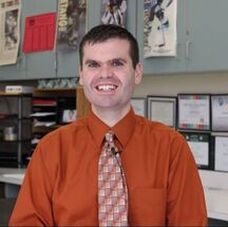 Students, families, and teachers share the same goal. We want to safely return to school as soon as possible. In our Recommendations for the 2020-2021 School Year, we highlight many of our core beliefs to make this happen in effective ways. Whether this means safeguarding and supporting our students’ wellbeing, ensuring access to curriculum offerings with a foundation in the arts and humanities, or embracing those uncomfortable conversations that come along with embracing learning that is inclusive of marginalized groups, teachers are at the forefront of making these happen. Now, we have all heard the joke. You know, the one that makes teachers cringe every single time. The one that is far from the truth about teachers’ three favorite months of the year. Summer months provide teachers with a time to learn, to refocus, to decompress, to reignite passions or to spark new ones to continue to be at our best for our students. And, just as the summer months offer students a well-deserved mental health break, the same is true for teachers. Maybe your break includes attending a conference to learn from and connect with like-minded colleagues. Maybe you reconnect with friends and family. Perhaps you take an extended vacation. Maybe your “dog days of summer” are spent with your kids and neighbors at the community pool. Regardless of how you have typically spent your summers in the past, you probably head back to school in August feeling refreshed, recharged and ready for the year ahead with a sense of growth of your craft and commitment to your students. At the end of the past several summers, I have been physically exhausted from trying to soak as much in professionally and personally as possible, but mentally inspired, grounded, and focused. But this summer is different. Conferences, at least the in-person sort where you network with those who challenge you to be better, are cancelled. You’re probably visiting fewer friends. Vacation plans have likely been rearranged or postponed. The pools, museums, and parks that you used to frequent in the summer months? Those trips likely look different, too. As will the start of the 2020-2021 school year, as the traditional school year kick-off events may be placed on the back burner, too. As schools prepare to welcome students and staff back into the buildings after five months of stay-at-home orders and distancing recommendations, administrators, principals, and counseling staff are preparing to respond to students’ mental, social, and emotional well-being - and rightly so. We live to better the lives of our students, to be there for them, to pick them up when they are down, to be a reason to smile on the rainy days of life, and to inspire them to find the greatness that already lies within themselves. It’s our identity to be more than “just a teacher” for our students; we are a foundation of support. But, like any foundation, how much earth-shifting events can we withstand before small cracks begin to appear? How many small cracks can continue to be hidden under the surface of a seemingly strong exterior facade? Teachers’ mental health is an equally important piece of the return-to-school-puzzle and, in order for educators to be ready to resume “business as usual” in August, we need to provide and encourage access to quality mental health services that we advocate for our districts to provide to students and families. It’s why you are trained to put on your oxygen mask first on a plane before helping others. Because mental health has been looked at as a “personal issue” and not a “personnel issue” for so long, many school districts may not know where to start when it comes to encouraging mental health services for employees. And it needs to go beyond the well-intended suggestions of taking a walk, reading a book, or sharpening your colored pencils to complete an adult coloring page. Those may be great in the short term, but we need to take a long, hard work at strengthening the mental health supports available for educators - and not just in 2020. While I appreciate the efforts of schools to send daily minute minders and suggestions, these band-aid solutions actually made me question myself. If I do not have time for reading a new book, coloring, or learning a new recipe, I thought, “What am I doing wrong as a teacher?”. Undoubtedly, our interactions with support systems in school, namely our colleagues in our building, will be limited. Personally, it’s my teacher friends “down the hall” that know when I am not having a great day or two and know how to bring a laugh, a moment of wisdom, or a nudge, and vice versa. That worries me, especially as we enter a school year that will most likely be the most challenging of our professional lives, with plans circulating of mixing in-person and virtual instruction, having long held school traditions altered, and preparing to teach in a world of staggered student days. Let’s add in days that will see a substitute teacher shortage, meaning teachers will be covering additional classes. It creates a cocktail of anxiety, guilt, and pressure that could cause any teacher to display mental health fatigue. For good measure, we can also add local budget cuts and ambiguity about supplying masks and sanitizing products for classrooms. Oh, and let’s mix in the worry that will come from doing our best to keep our students and our own families healthy during a once in a century pandemic. So what can we do? Quick phone calls or texts from our administrators: “Hey, are you faring okay? Anything I can do to help out?” A good start. Altering whole group faculty meetings to small learning community groups to support, ask questions, and to share what’s going on between the ears? Better. But, there must be the opportunity for outside counseling during these tough times, and let’s drop the stigma of weakness at the door. Professional athletes seek the support of sports psychologists during rough or pressure-filled spots in their careers. Wall Street investment firms have mental health performance coaches on staff. It has been the last five months, though, that has shined a light on how vital personalized access to mental health professionals is for teachers. A 2017 study by the American Federation of Teachers found that more than 60 percent of teachers found their work “always” or “often” stressful. 2017? Seems like forever ago. This is an alarming statistic under any circumstances, but must be taken seriously as we resume teaching in the era of COVID-19, when we’ll be working even harder to meet the needs of our students while balancing our families’ needs and, of course, our own personal needs. We cannot be a strong support system for our students if we are struggling ourselves. Let’s encourage conditions that fix that.
0 Comments
BLOG POST BY PTAC MEMBER MARYANN B. MOLISHUS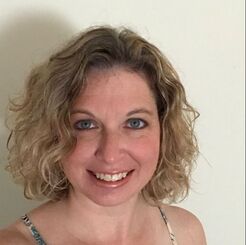 Many years ago, after starting my family, I returned to college to get my degree in elementary education. I graduated in 2000, and I got my first teaching job. Soon after, I needed to return to college to complete my requirements for my permanent teacher certification. As I investigated possible graduate programs, I asked myself, “What are the needs of my new school district?” Where I landed was a master’s program in applied technology. I had observed a need for our staff and students to learn more about how technology can improve teaching and learning, and I wanted to be able to support my district in improving technology integration. It has been twenty years since I first began advocating for technology integration in my district. While much of the technology has changed, the need for professional development has not. Through my graduate work and time as a technology mentor and by facilitating technology-focused professional development, I have seen the benefits of providing training and guidance to teachers as they build their technology skills, which ultimately benefits the students. In late March and, with only a couple of weeks to prepare, teachers, administrators, and support staff had to redesign the last three months of the school year to allow children to learn at home during a global crisis. No one was fully prepared for this challenge, and many were pushed to their limits as they tried to figure out how to navigate distance learning. It’s still not a given that all teachers are proficient with technology. However, what the Covid-19 pandemic crisis has exposed is how crucial access to and proficiency with technology tools and resources are to a quality, modern education. If teachers lack technological proficiency, it becomes nearly impossible to provide a quality education for students. If teachers are not yet proficient with the technology, they need to learn fast. Through much collaboration, creative thinking, and with access to many new online learning tools being offered free of charge, staff and administrators stitched together a temporary fix to the problem of how to teach children during a pandemic. Our district’s distance learning committee created tutorials for teachers and families. Teaching teams met virtually to plan and share ideas. Resources were shared and modified, and modified again as teachers learned what worked and what didn’t. Our district’s technology integration specialists arranged group and one-on-one training sessions to support teachers. Technology is ever-changing, as is the world in which we live. That’s why we need to continue to offer teachers professional development that provides guidance as new tools and scenarios emerge. Our students and families deserve well-trained teachers who are able to provide quality learning experiences, whatever the school year brings. The Pennsylvania Teachers Advisory Committee emphasizes the need to support the wellbeing of teachers in its Recommendations for the 2020-2021 School Year. Supporting teacher wellbeing includes providing “training on relevant new technologies,” and, “access to professional development on effective remote teaching practices and technologies.” We know from the experiences of the last few months how crucial it is to have teachers who are trained and prepared to use effective tools and strategies to teach in-person and remotely. During these summer months, we have the time to reflect and to continue to work together to plan for a new school year fraught with uncertainties. We need to be sure that access to professional development is part of the planning that takes place. From my first year as a teacher jumping into a technology integration graduate program, until now, I continue to see how important it is for teachers to be given the time and guidance to develop proficiency in using technology to guarantee a quality, modern education for all students. BLOG POST BY PTAC MEMBER LISA PICKETT, Ed.D.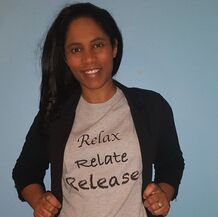 Every year I have students in my classes who have been exposed to traumatic experiences that influence their overall ability to function. Student #1 found their father lifeless in the basement. Student #2 hides the fact that their brother is a heroin addict. Student #3 hears gunshots every night. Student #4 fears that they may be racially profiled while catching the bus to school. Student #5 is a motherless child because their mother died while giving birth to them. Student #6… Student #7… It never stops—NEVER—because every student has a story to tell. Most importantly, their stories influence how they show up in the classroom academically, socially, and emotionally. As such, many of my students have reported that the experiences that have carried the most weight are not the academic lessons. They are the subtle onstage and offstage experiences that encourage my students to communicate, practice active listening, develop interpersonal skills, adapt, problem solve, research, and employ conflict resolution. Consequently, if there is one truth that I know for sure after 21 years of teaching, it is that when students return to school post COVID pandemic, the academic, social, and emotional well-being of our students will continue to be influenced by their stories as well as new experiences influenced by COVID-19 - not to mention recent experiences connected to the Black Lives Matter Movement, racial oppression, American government, politics, economy, and social injustice. In addition, many students will not yet know how the aforementioned experiences have affected them let alone how to best mitigate the effects. In response, school districts must prepare to provide teachers with support to promote “social-emotional learning, identify and meet the needs of children who have experienced trauma, and create inclusive classroom spaces protective of all children” as indicated by the Pennsylvania Teachers Advisory Committee’s 2020-2021 School Year Recommendations. Schools will need to have clear systems in place not only to train teachers how to best support the socio-emotional needs of students but also to support teachers. These systems will need to reflect trained trauma experts, social services, counselors, trauma informed pedagogy, and culturally relevant practices that promote student wellness. Such support will be essential as it will provide a lifeline to many of the social-emotional needs and competencies that influence the educational well-being of students during what has been pegged to be one of the most historical times in contemporary American history. BLOG POST BY PTAC MEMBER LARRY CIARELLI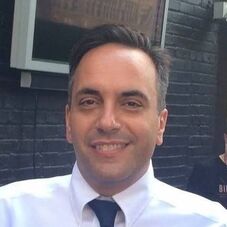 I am an educator in an urban environment in western Pennsylvania. I teach first grade ELA. This is my 25th year of teaching. I have experienced many challenging situations in my career. After teaching online and adjusting to the new normal of teaching due to the Coronavirus, I have a few topics that I would like to address or share. I feel that all students in Pennsylvania that return to school in the fall are going to need basic foundational skill review from the prior grade more than when addressing the usual summer slide. These skills were possibly only provided for half of the year leading up to the closing of schools due to Coronavirus. My first graders had a solid foundation, participated in online learning, but clearly did not close the year as I would have liked. Some of my first graders were still cracking the reading code, and others were almost there. I am concerned that frustration levels will run high next year. I don’t want my students feeling that in their second-grade year. Educators like myself will need time to individualize instruction based on their students while providing grade-level standards. There will be times where I will need to take a step back and address unfinished learning with my new students that were not addressed. Modifying and scaffolding will be needed to address unfinished learning the students need. I have had multiple students in my classroom in the past that closed their learning gaps after using small group instruction with targeted skills based on assessments. I used centers throughout all my years of teaching. This allowed me to meet with fewer students daily. Two important steps for me will be gathering data and holding discussions with teachers from the prior year to get an idea of where to start with my new students. I believe a growth model that adjusts for students’ specific contexts is best suited for next year, not a standardized evaluation, or a hard focus on rigorous prescribed curriculum models. This will require creativity with time and a lot of flexibility. I do not feel a “business as usual” approach is going to be effective. Districts need to understand that teachers are professionals, know their students best, and have the tools to make remediation successful. In some of my years of teaching my opinions were highly valued, and other years I was told to follow directions. We need to voice our opinions, recommendations, and be allowed to move forward with covering the unfinished learning in our own creative ways. There have been so many changes in education since I started in 1994. It seems as if there is less flexibility and fewer freedoms given to teachers in our nation as a whole. I hope that districts across Pennsylvania understand educator concerns, and take in the valuable recommendations and feedback that teachers have. Because we must look to those who best understand the learning needs of our students, I ask that decision makers consider Pennsylvania Teachers Advisory Committee’s Recommendations for the 2020-2021 School Year. I know in my heart that everyone is trying to do their best in decision making, but I feel the teacher’s voice is not being heard enough. BLOG POST BY PTAC MEMBER KAREN GENNARO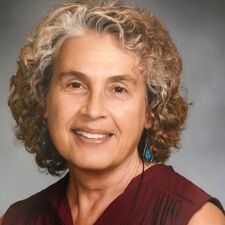 Have you heard of the ‘Bergson legend’? Well, if your curiosity is sparked, you are entering the realm of wonderment Roderick Gilkey, professor at the Emory University Schools of Medicine and Business, and Dr. Clint Kilts, director of the Psychiatric Research Institute’s Brain Imaging Research Center have called the “serious business of play.” Play provides opportunities for direct experiences. Gilkey and Kilts assert “direct experience remains the keystone of a person’s brain development” (2007). I love legends! Legends link us and our imaginations with people, places, ideas, belief systems...bringing forth a zeitgeist we may never have fathomed but for the resilience of a transcendent narrative. So, who is this legendary Bergson? And how is all of this relevant to play, that universal heritage of childhood? Before digging in, let’s take a moment to construct a common understanding of the word “play”. According to the free dictionary, it is derived from the Old English word “plegian” which meant to exercise....move about freely, to frolic. Present-day definitions of play are diverse, deceptively simple, encompass nearly all forms of engagement, and merge with a multiplicity of states of being. Gilkey and Kilts toss up an educationally relevant definition of this ‘serious business of play’ both as a verb: “individual or group imaginative activity that promotes discovery and learning, or a social activity that promotes emotional and social intelligence; and as a noun: an activity engaged in for enjoyment or recreation.” So, children play. Children learn. Children grow. Children change. Now, what about the ‘Bergson legend’? Well, Henri Bergson was a French mathematician, thinker, writer, and philosopher. His ideas rose to prominence during the late 19th and early 20th centuries. History has it that Bergson puzzled through many vast, intriguing, and enduring human perplexities. His ideas are set forth in texts such as Matter and Memory, Time and Free Will, and Mind Energy. He also wrote about laughter and intuition among other topics. Readers sensed a numinous clarity in his ideas. So it comes as no surprise that when he had occasion to formally declaim them, those ideas took flight for the future. Legend has it that Henri heralded the new year of 1913 as the primary source of New York City’s first-ever traffic jam! You see, he was set to speak at Columbia University about his newest book: Creative Evolution. Turns out that Henri’s speaking engagement garnered public interest just like a telling TED talk would today! Truth be told though, the New York Times actually spurred the gridlock as it ignited an inquisitive public when it proclaimed Bergson’s views on a "vital impetus" or, in other words, the existence of a natural creative impulse inherent in human beings. Central to the concept of this creative impulse is “duration”. Henri posits the notion that there exists among human beings, children, in particular, an individualized or personalized perception of passing time which is distinct from objective and measurable clock-time. He offers that his notion of “duration” can “best be understood through intuition.” The concept of “duration” and other pillars of Henri’s legendary ideas remains relevant today. His influence is visible in the research of Howard Gardner, Martin Seligman, Mihaly Csikszentmihalyi, Mitchell Resnick, and Daniel Goleman. Each proclaims mental, emotional, cognitive, and physical health as necessary and functional contributors to academic growth. Henri’s contributions have reemerged to be reclaimed and reframed within the context of current discourse stressing the school’s responsibility to address the holistic well-being of children. Erika Christakis, author of The Importance of Being Little and early learning advocate, identifies a “play impulse” inherent in all children. She declares this impulse to be an essential aspect of being when she states “Play is the fundamental building block of cognition.” Neuroscientist Jaak Panksepp concurs. To forge an alliance between play, learning, and the affective brain, Panskepp tells us the joy children experience while at play becomes the necessary “emotional fuel”. A sort of multi-sensory synchronicity emerges as children delve deeply into their play. Teachers must have the agency to offer, provide opportunities for, and join with children to create and support teachable moments that emerge spontaneously while immersed in play. Play is a child’s work. The Pennsylvania Teachers Advisory Committee affirmed in its recent Recommendations for the 2020-2021 School Year that education, including early education, must focus on the holistic wellbeing of children to ensure they are mentally, emotionally, physically, and academically healthy. How is this to be achieved? One way is by ensuring that educators and stakeholders truly understand the historical depth and scientific breadth of the statement: experiences grow the brain. Schools must embrace this paradigm. Schools must afford teachers the critical instructional agency necessary to move the field forward, away from the gridlock of the current largely decontextualized skill-driven test-prep curriculum. It is vital that teachers are empowered to design experiences that link academic learning with the playful, creative inclinations of children. Further, administrators and teachers must accept that it is imperative for early learning settings to provide a consistent context for “complex extended play periods” (Christakis, 2016) during the school day. In so doing, we support young children in their intuitive search for patterns, structure, and cohesiveness among curricular outposts and each other. Framing academic learning in this way will engender growth patterns that engage the whole child. Institutions amplify society’s messages. Author and speaker Thomas C. Murray reminds us that “Prioritizing the social-emotional aspects of learning helps us see more than what we teach. It helps us see who we teach.” Public educational systems whose mission is to school all children to a high level with equity and integrity must acknowledge and accept a commitment to continual institutional improvement through reflective practice and undertaking related action. Schools must accept that in order to truly contribute to the communities they serve, they must continuously grow and change to meet the needs of the people they educate. As I mentioned, I do love a legend! But, I believe in a tangible legacy. These few words offered by Henri Bergson have impacted a multiplicity of thinkers and doers over time: “To exist is to change, to change is to mature, and to mature is to go on creating oneself endlessly.” These words can also serve to spark a playful mindset and propel us into the future! Join me on the journey? #existtochange! BLOG POST BY 2019-2020 PA TEACHER OF THE YEAR AND PTAC MEMBER MARILYN PRYLE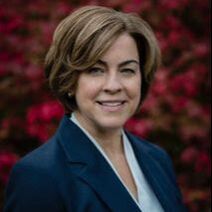 PTAC has recommended that every school district “provide literature choices that allow students to see themselves represented in the main characters.” When questions about representation in literature come up, I usually feel somewhat comfortable. Lately, however, I’ve begun to take a closer look, and I’m realizing that my class is not as diverse as I let myself think. I teach 10th grade World Literature. World Literature is, by definition, about texts from around the world. In my class, we read the old stuff—Gilgamesh, the Torah, the Mahabharata and the Rig Veda, the Qur’an, the Tao te Ching, African proverbs, creation stories from a variety of cultures, the poems of Rumi, the Greek myths, the Iliad, and so on. This was the curriculum that was given to me ten years ago, and I really enjoy teaching it. I often think to myself that if many of my students didn’t read a text like the Mahabharata in my class, they most likely never would in their lifetimes. (I should note that we only read selections from these texts, as many of them are massive.) So I take it very seriously—this is potentially one of the only times some of my students will be meaningfully exposed to the texts that are foundational to the world’s major religions and the cultural values of various peoples. Muslim, Hindu, and Jewish students tell me every year that they were both surprised and happy to see something they learned at home included in a public school curriculum—they had never had that experience and were grateful for it. One student whose mother grew up in China told me that through studying Confucius, she was able to better understand her mother’s upbringing, and that she was able to have insightful conversations about Confucius with both her mother and grandparents, who still live in China. In addition to our regular curriculum, my students do monthly Book Clubs with books of their choosing. They can choose any book they want. Students can find books in the public library or on PDFs online; they are not expected to buy books, although many do, either in print or on their e-readers. I also keep my classroom library stocked with multiple copies of many books, both fiction and nonfiction. I make sure these reflect a diverse array of main characters and subjects, including black, Latinx, and LGBTQ people. Students often remark about how much they enjoyed their reading, or that a certain book spoke to them, or that they were grateful to read something so powerful for them personally that also counted as part of the class. So when discussions about cultural representations and multiple perspectives arise, my usual response is, “We’re doing it.” But when I look a bit deeper into this default stance on my curriculum and practice, questions emerge: Am I really doing enough? Does my class genuinely reflect our world and the voices that inhabit it? What overall message is my class sending? As I examine everything more closely, I’m realizing how far I still have to go. My Curriculum Even though students are exposed to many different cultures in the first semester of my class, the bulk of the prescribed curriculum (not including Book Clubs) is still extremely Euro-centric. Gilgamesh, Genesis (from the Torah), and the Greek myths are foundational for the “Western” canon. So is the Iliad, which we spend all of the third quarter on. From there, we read Virgil, Sappho, Ovid, Sophocles, Dante, and Shakespeare. Welcome to whiteness. Some of this I can part with. (But some I can’t—Sappho is the only female writer in the prescribed curriculum, and the only LGBTQ voice, although we discuss the relationships between Gilgamesh and Enkidu, and Achilles and Patroclus, in depth). But what makes it so difficult is that like everyone else, I was taught that these texts and others like them are foundational, indispensable, and requisite to any kind of intelligent participation in our culture. In addition, I genuinely love all the texts I teach. They are brilliant and linguistically thrilling. They have stood the test of time and have much to teach us. But part of what they teach, when stacked together in a curriculum, is the absolute dominance of one group over others. If about two thirds of my curriculum resides in the Western canon, I’m sending a message about what’s most important. I’m passing on the message that was sent to me. In The Racial Contract (1999), Charles Mills explained that underlying all social contracts is a racial contract that centers around global European domination and white supremacy. My curriculum, and I would venture most literature curricula in our country, reflects that. As an English teacher, I’m not sure how to reconcile this. I know I need to revisit my idea of what comprises literary “essentials.” What messages do I want my students to take away from the class? And what skills? And can these messages and skills be communicated through texts that represent the world in a more balanced way? In other words: How am I centering the class? Is it on a Euro-centric, linear, white, male trajectory with a few “other” cultures thrown in? How can I decenter it? How can I make it even more genuinely reflective of the entire world? I also don’t want to ignore the dominance itself. I don’t want to have a happy, simple mix of cultures and texts and pretend that none of them interacted with each other. Mills explained that the global racial contract “requires a certain schedule of structured blindness and opacities in order to establish and maintain the white polity” (p. 19). Even though the time frame in my class does not overlap with the modern era of colonization and enslavement, there must be a way to address the cultural thinking that laid the groundwork for this era. This is another question I will be researching this summer. Book Clubs But what about Book Clubs? Book Clubs are how I let myself feel “covered” in terms of having diverse voices in the room. My thinking goes something like this: “Sure, all the students are reading Homer, Sophocles, Virgil, and Ovid in a row, but one Book Club group just read The Hate U Give this month.” I’ve done my job, right? Maybe. But maybe not. Yes, the variety of books I keep in my classroom helps expose students to different voices. And yes, many students will gravitate to diverse voices, especially to stories that have made it to mainstream films. And yes, some students eagerly devour the biographies of their favorite rappers or athletes, many of whom are non-white. I’ve created that space. But maybe I’ve only created it for the students who are already there. Is this important? Of course. But have I pushed the others to consider new perspectives? Not really. Here’s an example. For the past two years, I’ve had a couple groups of students—all male—read Stephen King’s It for the whole year. (Since the book is about 1100 pages long, they were permitted to read 200 pages each month.) I was delighted about this, and recently was explaining it to a colleague. Her reaction was not what I expected. “So that’s all they read, all year?” she asked. “It’s 1100 pages long,” I replied. “It was definitely an accomplishment.” “Sure,” she said. “But that means they were only exposed to one additional voice, a white, male voice.” This stopped me in my tracks. Obviously, Stephen King is one of the most brilliant and skillful writers of our time. But what had I done to show these students other voices, to broaden their perspectives? And wasn’t that my job? What makes this so difficult is that I premise the Book Clubs on complete student choice. Students must develop the skill of figuring out what, out of the entire universe, they want to read. This is a deep-seated conviction of mine. But isn’t it my role, as an experienced reader, mentor, and fellow citizen, to make students aware of the variety of voices in literature, the country, and the world? Won’t my students need this knowledge when they leave our small, mostly homogeneous, town? Is there a way to preserve the ideal of choice and still nudge students to seek out the unfamiliar voice? These are yet more questions I’ll be deliberating this summer. And speaking of summer, I’ve also turned a critical eye to one of my most prized documents: my summer reading list. My Summer Reading List I love my summer reading list. Besides being comprised of some of my favorite books, it also sets students up with concepts we will discuss all year in class. Man’s Search for Meaning, for example, not only tells a story of physical, mental, and spiritual survival; it lays out the meaning of life (quite literally; it’s on page 66*). Under closer scrutiny, however, the list brought up some questions. Sure, I have different cultures and perspectives, such as Coelho’s The Alchemist, Ruiz’s The Four Agreements, and Patel’s Life of Pi. But I realized that other books are other-cultured stories told through white voices, such as Paton’s Cry the Beloved Country and Buck’s The Good Earth. Even Hoff’s The Tao of Pooh is about the principles of Taoism applied to the stories of Winnie the Pooh. Let me be clear: These are beautifully written masterpieces that portray the cultures within their stories with authenticity, respect, and love. They are wonderful books that everyone should read. But what message am I communicating as a teacher when these books are stacked one atop another on a recommended list? What is the cumulative effect? What Is the Cumulative Effect? To put it another way: What voices am I elevating? What voices am I not? My intention is not to clean house of all the white, male voices in my curriculum. But the overall effect is something I want to examine. Many students won’t even remember the exact texts we read. (I realized this the hard way, in a discussion with my own son, whom I taught two years ago. Throughout the conversation, he said things like, “We read that in your class? I thought we read that freshman year,” and “Are you sure we read that? I don’t remember that book at all.”) For most students, the school year in any given class is like an impressionist painting. The details, up close, are grainy and seemingly unrelated. But the overall picture becomes clear when taken in as a whole. What is the general impression that remains with my students, either consciously or unconsciously? What messages do students internalize—about which authors are “important,” about who gets to tell a story, and about dominant cultural values? * * * We should all be asking these questions, no matter how integrated we think our curriculum is. We are all part of a never-ending journey of growth and recovery, in our communities, country, and world. In order to help our students grow, we must never stop questioning our own content, procedures, and methodology. Our students are counting on us. * “Everything can be taken from a man but one thing: the last of the human freedoms—to choose one’s attitude in any given set of circumstances, to choose one’s own way” (Frankl, p. 66). Frankl, V. (2006). Man’s search for meaning. Beacon Press. Mills, C. (1999). The racial contract. Cornell University Press. BLOG POST BY PTAC MEMBER PAUL BAKNER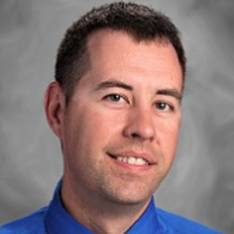 When our children return to school, they will need the arts, humanities, librarians, physical education, electives, and mental health professionals more than ever. The Pennsylvania Teachers Advisory Committee has called for equity in access to these areas in the organization’s Recommendations for the 2020-2021 School Year. I teach high school music in northeastern Pennsylvania, and I saw this need in my classroom every day even before the closure of schools in March. When I started teaching roughly 20 years ago, a student confided in me that she only comes to school for band. This statement initially surprised me, but it has been shared with me by dozens of students during my career. An important part of my career as a teacher is to create a place where students feel safe and valued. The arts, humanities, librarians, physical education, electives, and mental health professionals are well adapted to create spaces where students feel safe in schools. At the start of every school year, the first question I am asked by students is when I am handing out lunch passes so that they can eat in the band room instead of the cafeteria. These classes are the areas where students flock to find friends and allies. The arts, humanities, librarians, physical education, electives, and mental health professionals are well adapted to create spaces where students are valued. In my classroom, students’ interaction and collaboration with peers is required and everyone contributes. One of my drum major’s favorite sayings is, “There’s no bench in band.” Everyone contributes, everyone counts, and everyone matters. In my classroom, I teach more than just music. I teach students to be someone. I teach students that achievement and success are group activities. I don’t just help kids make great music. I use music to help make great kids. I think that’s what the world and our country needs most right now. The arts, humanities, librarians, physical education, electives, and mental health professionals fill a void that other subjects cannot. Kelly Pollock, the executive director of Center of Creative Arts (COCA), has given me permission to share her insight. I think that the quote eloquently sums up the importance of sustaining access to these subjects and professionals at every school and every grade level as we move forward toward the next school year. “The true purpose of arts education is not necessarily to create more professional dancers or artists. [It’s] to create more complete human beings who are critical thinkers, who have curious minds, who can lead productive lives.” – Kelly Pollock, Executive Director, COCA Blog Post by PTAC Member Christian Wrabley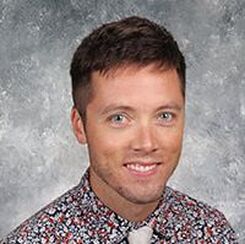 Think of the last time you got hurt. Pause and think about that before reading on… Did you think of a physical injury or an emotional injury? We tend to experience psychological injuries far more frequently than we do physical injuries, yet they don’t first come to mind. Failure, rejection, loneliness, anxiety…discrimination, death, and other traumas. These injuries are damaging and can get worse if we ignore them. They can be treated, but we usually don’t prioritize treatment for emotional injuries. Oh, you’re feeling depressed? You’ve probably had people tell you, “Just shake it off; it's all in your head.” Can you imagine saying that to someone with a broken leg? “Just shake it off; it’s all in your leg.” Last school year, I spoke at two different events and shared stories of the mental health “baggage” that too many young people carry with them into the classroom each day: obsessively high academic expectations, social media drama, demanding hours and pressure of sports and clubs, hunger, lack of sleep and security, etc. These conditions can lead to feelings of depression, anxiety, loneliness, and low self-esteem. If I were to give that speech again now, I’d have to add the following: a global pandemic, five months of social distancing, a skyrocketing unemployment rate, racism and discrimination at deadly levels, and lots of deaths without opportunities for comfort and closure. To say that our students may return to school in the fall with new levels of trauma could be a dangerous understatement. Our kids are incredibly resilient, but I think many will bring more trauma-shock with them in the fall than ever before. To this end, the Pennsylvania Teachers Advisory Committee, in it's recommendations for the 2020-2021 school year, has made a point of saying that education must focus on the holistic wellbeing of children to ensure our students are mentally, emotionally, physically, and academically healthy. Kids may be feeling angry, lonely, depressed, hungry, or scared. These conditions may not show up on an X-ray, but they show up when we pay closer attention to the full well-being of our students. These are social-emotional wounds that need to be rehabilitated. A May 2018 study by the global health services organization, Cigna, found that chronic loneliness poses as significant a risk as smoking 15 cigarettes a day, making it even more dangerous than obesity. Cigarettes come with a warning and regulations. Loneliness does not. When kids return to school in the fall, they will have been isolated from classmates for five months. Teachers and schools have to be part of the rehabilitation. The school is not separate from students’ day-to-day lives. Too often it’s treated that way. There was a time when people seemed to think kids went to school to learn content, practice it, and be evaluated on it. I think since school closures, people have realized that schools also serve as places for nourishment, play, exercise, socializing, competition, shelter, and performance. Wellness is essential for personal development, even more so than math, science, curriculum, and content. And, before we are “teachers of math” or “teachers of science,” we must be teachers of kids. The kids must always come first. During Coronavirus closures, about 27% of students in urban schools became “truant,” according to an EdWeek Research Center Survey conducted in April. And in districts with more than 75% low-income students, 32% of students essentially disappeared. At a district with over 30% transient student population, students are regularly moving in and out of the district. Typically, a student does not get dropped from our rosters and system until they are officially enrolled at a new district, to prevent students from “falling through the cracks.” This means that sometimes students’ names stay on the attendance roster for months even though they no longer live within our district boundaries. (We then know they have not yet enrolled in a new school.) This also means that, when schools are not “open,” students are continuing to move (maybe even more frequently now) but they are not being registered by the school within their new home district. During these devastating economic times, more families are also newly becoming homeless. To compound tracking issues, these families may be hesitant to contact authorities to ask for help or communicate their situation due to concerns of losing their children to Child Protective Services. When a child builds strong relationships with people at school, they create a positive association with school, in general. Knowing that school is a place that can provide help, we keep those doors of communication open and students are more likely to stay in touch. Schools provide students with the encouragement to engage confidently, the resources to gain wide knowledge, the incentives to work hard and apply themselves with intention, and the programs to spark incentive. But if a child comes to school not having had a meal the night before, how can we expect her to schedule SATs and create a preparation plan to succeed? How can we expect students to think about their dreams and aspirations for what they want to do when they’re adults if they’re not confident they care to live beyond this month? Some areas have seen a 400% increase in suicide prevention hotline contacts since the beginning of this pandemic. Teachers can implement Pinterest-worthy lesson plans and maximize instructional time by teaching “bell-to-bell” but the trauma of suicidal thoughts will surely inhibit any new learning. Kids need opportunities for unstructured play and physical education. It is in these spaces that students learn to comprehend their own development and growth, and how to take on the world. Kids need opportunities to play instruments and perform on stage with their peers. The greatest contributions will come when students learn to use school for their own advantages and apply their knowledge to authentic experiences. Kids need time and space to draw and paint and create art. Art and imagination support every dimension of child development. The best remedy for loneliness is face-to-face connection with others. These are non-negotiables when we return to our learning spaces. I’m confident every school will have a Social-Emotional Learning (SEL) plan in place this fall. But if those plans don’t include opportunities to play, sing, dance, scream, collaborate, and socialize, they are not SEL at all. This pandemic has devastated businesses, revenue, retirement plans, and more. Budgets will be squeezed as we prepare to give our kids the best we’ve got next year. It is imperative that our schools focus on the holistic well-being of children to ensure our students are mentally, emotionally, physically, and academically healthy. Much of the burden and responsibility has been placed on young people to change, rather than the system. “When a flower doesn’t bloom, you fix the environment in which it grows, not the flower.” (Alexander den Heijer) Please don’t cut the programs that make our kids feel alive and valued most - the arts, humanities, physical education, and electives. Let us recognize that librarians, band directors, school nurses, and guidance counselors are essential school employees. If we deprive our kids of important developmental opportunities, it will eventually have ruinous social costs. Can we really look them in the eye and tell them they’re not worth the investment? BLOG POST BY PTAC MEMBER ALEXANDER SLAUGHTER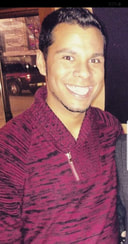 My journey did not begin as an anti-racist. As a child of a Black father and White mother, I began life with the colorblind mentality. I was led to believe by various authority figures that the United States had solved any forms of racism back in the 1960s with Dr. King. The lessons that I was taught year after year from my Catholic K-8 education was that he did it pretty easily: get a whole bunch of people together, say a profound speech, and *poof* there goes racism! We solved it! Yay! I, therefore, didn’t catch all of the microaggressions that stung me and my Black classmates, whom I didn’t meet until high school. People often praised me for things I had considered common like holding the door for someone. They also said things like, “You’re not even Black” or “You’re one of the good ones.” By the time I got to college, I got to hear a gut-wrenching defense of the N-word as someone used to tell me, “If you’re Black and I don’t like you, then you are a (insert N-word here), so don’t get on my bad side.” I didn’t understand that I had the power within me to say no to the obviously misguided, uneducated, and racist peers that I had grown up alongside. My first teaching assignment placed me at a school with a 96% Black population in the heart of Pittsburgh. We also had a large Black teaching force that was much higher than the national and state average. Unfortunately, my years of colorblind education had not prepared me for how to work with my students. I often thought and said things like: “What does race matter? It’s what’s on the inside that counts.” Here is the problem with that previous statement: no one waits for you to show what’s on the inside before making judgments about you and what you look like on the outside. I realized in my first full year teaching that my students faced a lot of racial adversity. Pittsburgh, like many other places in America, provides ample opportunity for Black students to find structural barriers because of their race. It wasn’t long before I also felt the hurt and oppression that my students were feeling. My students, all below the age of 14, were coming in feeling the threat of the police, not because they did anything wrong but because their neighborhood was labeled as a place to watch. Students had to hear their neighborhood on the news as a place that was broken and helpless. Students also shared situations in which some of my teaching colleagues carried some of their implicit biases into the classroom and had unknowingly negatively impacted students and caused trauma. I began to connect that I had been the victim of racist acts my whole life. I had faced the same experiences that my students had faced. My childhood neighborhood had a high Black population but was in no way high crime. This was the profiling I had faced. My glass ceiling had shattered. What was I going to do? It took 24 years of my life before I realized that race is a defining feature of who we are. Race is a social structure that was created in order to “other” people. When we address race we are using it as a way to separate people by skin shade. Racism is a way to demean and belittle people who are not White. I say this because people who are White are the majority and therefore in a space to oppress others whose views may not be the same. Since race and racism are human-made inventions, we have the power to unmake it and disrupt systems of oppression. So this is my plea to you: begin to reflect and educate yourself on race and systems of oppression. This work is not just to benefit Black students but also to open and engage dialogue with White students. I have transitioned to a new school where a White middle school student proudly asked, “Why don’t we get to have White history month?” I wanted to get upset. I felt like this was an attack on all of the hard work of many Black Americans who we don’t acknowledge but one time a year. Our curriculums aren’t mentioning major accomplishments of people of color and I felt like Black History Month is the only time that we celebrate anyone who is Black. I was angry, but instead of responding with anger we had a dialogue regarding all of the White authors, musicians, TV stars, Presidents, and scientists that she knew. When I asked her to name Black people who were represented in the same categories, her answers were limited. I informed her that representation matters and we will continue to educate. She deserved to have educators who are intelligent on race and oppression and are willing to educate her instead of dismissing her. Often we look at race as a red button issue, but why? Race is one of the first things we see about a person whether we appreciate it or not. Often, many students tend to stay in their homogenous groups based on race. These students are staying there because they are comfortable in that grouping. I challenge that if we hope to make students that are knowledgeable, compassionate, and critical thinking then we have to teach them about the complexities of more than just one race or culture. We have to go deeper into representation and help students see the value and importance in everyone, especially diverse groups of people. We need to begin to educate ourselves so that we are equipped to transform the lives of all students. I have spent many summers devouring books, articles, and videos regarding race in the hope to equip myself with enough knowledge and passion to educate not just my students but also any human around me, especially when those pesky microaggressions emerge. The journey begins with reflection and continues with transformation. This journey is tough, and not everyone is always ready to listen, but we owe it to ourselves to be informed and continue to have dialogue. The work in this is a marathon, not a sprint, and just when you think you’ve learned enough - push yourself to learn more. The path is hard, but as our country has shown, progress and equality are even harder to attain without any effort. Now is the time to begin the journey so we can follow through with the promise of “liberty and justice for all.” Some of my favorite books to begin the work:
BLOG POST BY 2020 PA TEACHER OF THE YEAR FINALIST AND PTAC MEMBER PAOLO TOLOMEO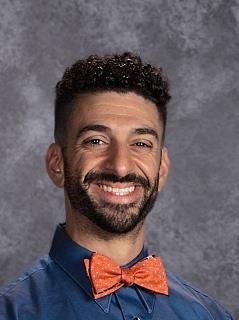 Being home during this pandemic has certainly presented many challenges, but it has also offered some blessings as well. During this time, I have been able to watch my two daughters, almost 3 and 1, grow and develop some personalities, for better or worse. One of the greatest experiences has been watching my 3-year-old during her creative play. She loves building with blocks and playing with her toy kitchen, but she also loves pulling weeds with me and watering the flowers. What has been most incredible, though, has been that she has created a story for all these tasks. Danica is never merely building with blocks; instead, she is building a castle to protect her toys from bad weather. She rarely is just “pulling weeds;” rather, she is searching for salad for the bunnies who live in the woods. Plus – she loves pulling weeds. Watching the joy my daughter gets as she creates these stories is exactly why I gamify my classroom. In a gamified classroom, I can create a storyline, or theme, to go along with my class activities. Some use Harry Potter, others The Amazing Race, while some go for Legos. Your theme can fit your interest! Yes, it is OK to bring your interests into the classroom. I, for one, love Pirates and adventure. My students have been able to present a convincing argument to the Queen as to why their voyage is delayed due to weather events while studying Natural Disasters and research in a nonfiction unit. My class has been able to analyze the lengths of bridges in Pittsburgh so that they could request the necessary materials to construct a bridge in a new land to span a previously hidden river. A gamified classroom does not mean I infuse games daily. Instead, I include game mechanics into my pre-existing activities. I create a story to capture the students’ interest, I create challenges where students can explore a concept in a way that is interesting to them. I am working to build a learning experience for kids based on autonomy, overcoming challenges and obstacles, and building strong relationships. Our students are surrounded by creative play every day, and I try to include those same elements in my classroom. Tech resources have taken notice and have worked to infuse gamification into their platforms as well. From Nearpod’s “Time To Climb” and Quizizz with their “Power-Ups,” to programs like Classcraft that is an all-in-one resource for gamifying your classroom. Finding new and exciting ways to approach our content and reach our kids has never been easier. The strength of gamification is that we can all try it at any time! We do not have to recreate anything or throw out our favorite activities. Rather, we can think about a new layer to add on top of our work. We can find what we are truly passionate about and infuse that into our lessons. The possibilities are endless and can be adjusted to fit your class. Resources like Nearpod, Quizizz, and Classcraft, as well as great books like Explore Like A Pirate from Michael Matera can help anyone get started. Online communities, like #XPLAP on Twitter, are filled with teachers sharing their activities and resources. The aim of gamification is simple – create a learning experience for our students that they will never forget, where they will strive to “level up” as much as possible, and where we can infuse our love of learning with their love of play. The classroom is the perfect place to start building a game. |
AuthorPennsylvania Teachers Advisory Committee Archives
March 2022
Categories |

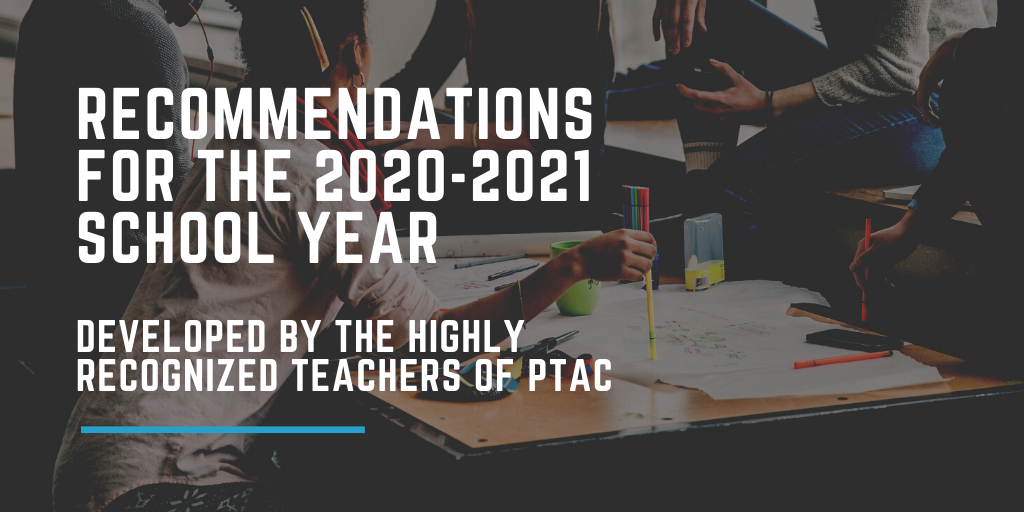
 RSS Feed
RSS Feed